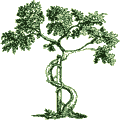
|
|||||||
Cerebral Palsy
What is it?
Cerebral palsy is a non-progressive disorder of the brain that occurs in a growing child. It could happen during birth, when the brain suffers from oxygen deprivation (anoxia). It could also happen from head injury in a child, or from infection like encephalitis or meningitis. When the brain cells controlling muscle tone and strength are damaged, changes occur to the muscles. With growth of the child, these changes in the muscles affect skeletal and joint development. leading to deformities and disabilities.
The cognitive aspect of brain function (I.Q.) is often, but not always affected. But the musculoskeletal system is always affected to some degree.
What are the symptoms?
In the first year of life, the infant may present as a floppy baby, but with further growth, the muscles often become spastic. Spastic muscles are best described as "tight muscles", and there is lack of the normal smooth motion. Depending on the extent of involvement, cerebral palsy can be classified as follows:
- Spastic hemiplegia occurs when one side of the body is involved (e.g., left arm and leg). The child usually walks but with a limp.
- Spastic diplegia occurs when the lower limbs are mostly affected, and the arms are mostly spared. These children may have limited walking, but are often wheelchair bound.
- Total body involvement occurs when all four limbs are affected. These children are very severely involved, and often have cognitive problems as well.
Deformities occur with growth, due to muscle imbalance that leads to contractures and joint dislocations.
What does your doctor do about it?
Cerebral palsy is best treated by an interdisciplinary team, consisting of a developmental pediatrician or neurologist, orthopedic surgeon, physical therapist, occupational therapist, speech therapist, and social worker. Only by approaching the child with cerebral palsy in a holistic way can the person as a whole be best served.
The cause of cerebral palsy is usually irreversible. So the goal of treatment is directed towards improving function and independence. From the orthopedic standpoint, treatment consists of techniques to decrease spasticity, physical therapy to improve function, orthotics to prevent deformity, and surgery to correct deformities.
Selective dorsal rhizotomy is a surgical procedure where abnormal dorsal rootlets from L2 to S1 (2nd Lumbar to 1st Sacral) levels are sectioned, to reduce spasticity of the involved muscles. Intraoperative EMG is used to guide the surgeon. Results are encouraging so far, although the long term benefits are still uncertain.
Baclofen is a gama-aminobutyric acid (GABA) that is recently used to control spasticity. Taken by mouth, it causes drowsiness. But if placed directly on the spinal cord by implanting a baclofen pump surgically, this side-effect is eliminated. The results are encouraging, but complications that include pump and catheter problems and infection, are high.
Botox (Botulinum-A toxin) is recently injected into selected muscles to cause partial paralysis of the muscles, thus decreasing its spasticity. The results so far has been encouraging, although many patients still end up needing surgery.
Physical and occupational therapy remains a pillar in the treatment of cerebral palsy. The daily range of motion and stretching exercises and strengthening exercises are essential in the ongoing treatment of these patients. The therapist helps in the selection and adaptation of equipment to enable the patient to be as independent as possible.
Orthoses (splints) hold the joints in proper position for function. For example, a WO (wrist orthosis) keeps the wrist in the dorsiflexed position, and allows the patient to use his hand more effectively to grasp. An AFO (ankle-foot orthosis) holds the ankle and foot in the neutral position to allow the patient to walk more normally.
Various surgical procedures have been used over the years to correct deformities in cerebral palsy. The following are some of the more common ones.
- Hip adduction with scissoring gait is a common deformity. Adductor release, by dividing the adductor muscles at the groin, corrects the scissoring gait. In more severe cases, the hip subluxates or dislocates. Surgery to correct this consists of Pelvic or iliac osteotomy and femoral varus-derotation osteotomy.
- Knee flexion contractures are common, and hamstring releases or lengthenings are often used to correct these problems.
- Equinus deformities (Plantarflexion deformity where the foot points downwards) is common, and heel-cord lengthening is effective. More recently, surgeons are tending towards selective lengthening of the gastrocnemius where possible, to prevent weakness of pushoff during gait. An Equinovarus deformity (where the foot points downwards and inwards) can be corrected surgically by a split posterior tibial tendon transfer, or a split anterior tibial tendon transfer with posterior tibial tendon lengthening. An Equinvalgus deformity (where the foot points downwards and outwards) is best corrected by a heel-cord lengthening and calcaneal lengthening. In the older patient with a severe painful fixed deformity, a triple arthrodesis may be the only option.
more information about cerebral palsy
NOTICE: The information presented is for your information only, and not a substitute for the medical advice of a qualified physician. Neither the author nor the publisher will be responsible for any harm or injury resulting from interpretations of the materials in this article.
Questions
or comments? Post your thoughts in the Orthoseek
Message Forum!
Find a pediatric orthopedic surgeon
in an area near you.
Home | About Us | Orthopaedic Topics | Message Forum
![]()
Comments, questions, or suggestions are welcome. Please
contact us using this form.